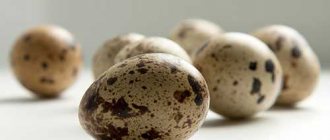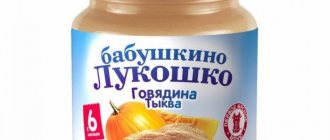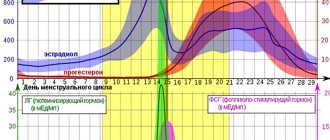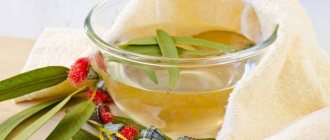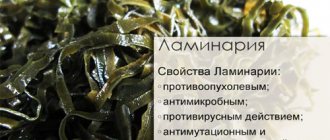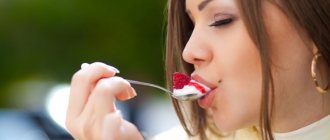pharmachologic effect
This product contains the active ingredient oxolin , which demonstrates antiviral activity against herpes , herpes zoster , and influenza (mainly type A2). Sensitivity to oxolin of adenoviruses, molluscum contagiosum and warts of infectious origin has been noted.
This remedy is used externally and has an antiviral effect. The mechanism of influence of the active substance is based on its ability to block the binding sites of the influenza virus with the cell membrane. The product blocks viruses on the surface of membranes, preventing the virus from entering cells.
Herpes
You probably know that the cause of the appearance of itchy, weeping blisters in the near-oral area is the herpes simplex virus, which infects up to 80% of the population of our planet. This pathogen most often enters the body in childhood and it is almost impossible to completely get rid of it. When our defenses decrease, the herpes simplex virus “wakes up.” We remember its existence, experiencing not the most pleasant sensations and scratching our swollen and painful lips.
A special feature of Oxolinic ointment is its virucidal effect against the herpes virus. Do not flatter yourself with the hope that the drug can permanently rid you of herpetic eruptions. After all, most viruses hide in the nerve ganglia. However, the most active representatives are still concentrated in the liquid that fills the painful blisters. And the medicine can affect them directly.
To treat herpes, a 3% ointment is used, which should be applied to the elements of the rash three times a day. Treatment time depends on the activity of the pathological process. Virologists recommend using oxolinic ointment for two weeks for uncomplicated herpes. If the disease is accompanied by relapses, then treatment can be continued for up to a month or even more.
Pharmacokinetics and pharmacodynamics
It is not toxic, there is no systemic effect if it is applied topically. The active substance does not accumulate in the body. If the drug is applied to the mucous membranes, only 20% of the drug is absorbed. After application to the skin, only 5% of the product is absorbed. It is not irritating if the required amount and concentration have been applied and the skin at the application site has not been damaged.
Does not accumulate. Excretion occurs through the kidneys within one day.
Flu medicine: applied externally
Influenza infection occurs in two ways: contact and, much more often, airborne transmission. It is known that influenza viruses are found in large quantities in the air. Before settling in and starting its destructive work, the virus must pass through the nasal passages. In order to ensure contact between the influenza pathogen and oxolin, it is enough to simply treat the nasal mucosa.
During the epidemic, it is better to apply Oxolinic ointment twice a day. The duration of use of the drug depends on the scale of the epidemic. As a rule, experts recommend using oxolin for preventive purposes for 25 days. It is during this period of time that the flu outbreak has time to reach its peak and decline, and the likelihood of infection is significantly reduced.
If you have to communicate with a patient with the flu, you should increase the frequency of applications per day to 3-4 times. Using a face mask and washing your hands frequently will further increase your chances of staying alert and healthy. If a family member is sick, we must not forget about timely wet cleaning and regular ventilation. The result of these seemingly simple actions is not inferior to, and sometimes even surpasses, the effectiveness of Oxolinic ointment.
Indications for use of Oxolinic ointment
The following indications for the use of Oxolinic ointment are noted:
- viral diseases of the skin and eyes;
- rhinitis of viral origin (inflammatory processes of the nasal mucosa);
- lichen squamosus , vesicular and herpes zoster ;
- molluscum contagiosum;
- the appearance of warts ;
- Dühring's dermatitis herpetiformis .
It is also used to prevent influenza, for which oxolinic ointment is applied during epidemics to prevent infection with the virus.
0.25% Oxolin is also used for stomatitis .
This remedy is effective for stomatitis of herpes origin.
Recommendations for mothers
Recommendations for the use of Oxolinic ointment by mothers during breastfeeding are by and large the same as for other people. Let's take a closer look at the main points.
- When treating a runny nose or ear diseases, the ointment is applied directly to the ear or nasal passages, depending on the location of the infection. The product can be used an unlimited number of times.
- When treating warts and other skin diseases, the ointment is applied to the affected areas pointwise, and you need to cover about 2 cm of skin around the sore spot to prevent the spread of the virus.
- If the ointment is applied to the affected areas of the skin on the chest, then before each feeding, after using this product, you should thoroughly blot the skin of the chest with a napkin to remove any remaining ointment, and then wash the chest with water.
- Wash your hands thoroughly after using Oxolinic ointment before each feeding of your baby.
Following these simple recommendations will allow you to get the maximum benefit from the product and prevent the ointment from entering the child’s gastrointestinal tract.
If a nursing woman uses Oxolinic ointment as a prophylactic or to treat a viral disease, it is advisable to lubricate the baby’s nasal cavity with the medicine to prevent infection of the baby.
Oxolinic ointment, instructions for use (Method and dosage)
If Oxolinic ointment is used, the instructions for use must be followed.
When treating viral keratitis , as well as adenoviral keratoconjunctivitis, it is necessary to apply 0.25% ointment behind the eyelid 1-3 times a day. Treatment is carried out for 3-4 days. If treatment is necessary for infants, you should definitely consult a specialist.
In order to treat viral rhinitis, you need to thoroughly lubricate the nasal mucosa 2-3 times a day for 3-4 days. For this, 0.25% ointment is used. The ointment is used similarly for children and adults to prevent influenza and ARVI . During a flu epidemic, it is necessary to practice lubrication for several weeks, and be sure to use the ointment when in contact with someone who has the flu.
Patients with different types of lichen and molluscum contagiosum should use a 3 percent ointment, which is applied 2-3 times a day to the affected areas. Treatment lasts from 2 weeks to 2 months, depending on the patient’s condition. Use during pregnancy for treatment and prevention should only be carried out after a doctor's prescription.
Use 3% Oxolinic ointment for warts . Apply to skin affected by warts. Reviews indicate that the medicine sometimes allows you to completely get rid of warts.
What is the danger
However, oxolinic ointment has several contraindications, one of which is children under 2 years of age. Pediatricians have not yet come to a consensus regarding the use of this drug for the prevention of colds in infants.
On the one hand, oxolin is absolutely safe and does not accumulate in the baby’s body, and this contraindication is associated only with the lack of medical research.
On the other hand, the ointment can dry out the mucous membrane, and sometimes side effects such as a short-term burning sensation in the nose or difficulty breathing are possible. The latter is due to the fact that infants have extremely narrow nasal passages, and to the fact that the consistency of the drug is quite thick.
The combination of these factors can lead to such adverse consequences as:
- further spread of infection through the middle ear or lacrimal sac, with which the baby’s nasal passages easily communicate up to 2 years of age;
- blockage of the passage to the middle ear or lacrimal sac with subsequent inflammation;
- complete narrowing of the airway lumen, which occurs with strong inspiration. In this case, a small amount of fatty and thick ointment can deprive the child of independent breathing.
Therefore, many pediatricians recommend using the drug in diluted form, mixing it with Vaseline or baby cream in a 1:2 ratio. It is worth noting that the medicine should not be stored in this form, since it can become an ideal environment for the growth of bacteria. It is better to prepare a new portion of the diluted product each time. True, there is an opinion that in this case the concentration of the active substance will decrease so much that the use of oxolinic ointment itself will not be essential. With the same success, you can use baby cream, Vaseline or peach oil: they create a similar protective barrier that prevents viruses from entering the body. In any case, before using such products, as well as after, the baby’s nose should be rinsed with sea water, thereby freeing it from bacteria.
Analogs
Level 4 ATC code matches:
Florenal
Oftalmoferon
Oksolin
Zirgan
Oftan I'm coming
Poludan
You can find many different drugs that have similar effects. Analogues of Oxolinic ointment 3 percent - Alpizarin , Atsigerpin , Vartek , Virolex , Amiksin , Gerperax , Vivorax , Zovirax and many others. At the same time, there are no medicines containing a similar active ingredient on the market.
During pregnancy and breastfeeding
Flu during pregnancy is not only unpleasant. Is it dangerous. Having an illness in the first trimester can lead to disaster. Therefore, avoiding infection is one of the first tasks of the expectant mother during the period of raging flu. Oxolinic ointment ranks first in the ranking of antiviral drugs approved for use during pregnancy. The safety of the drug allows its use in any trimester.
Prevention of viral diseases in breastfeeding women is another stumbling block. During this period, the body is especially susceptible to the action of pathogenic microorganisms. Nine months of pregnancy, childbirth and subsequent breastfeeding undermine the immunity of even the healthiest woman. Pathogenic microorganisms actively attack a weakened body, and prevention of viral infections during this period is simply necessary.
Most antiviral drugs pass into breast milk and are therefore prohibited for use. Oxolin is practically not absorbed and therefore does not penetrate into milk. Oxolinic ointment, approved for use during lactation, is a simple means of prevention that can help a nursing mother stay on her feet.
The regimen for using the drug in pregnant and lactating women does not differ from the standard morning-evening regimen. In case of a large-scale flu epidemic, it is better to use the product within a month.
It is worth keeping in mind that clinical trials of the use of Oxolinic ointment in pregnant and lactating women have not been conducted. Therefore, sometimes in drug descriptions you can find the rather frightening phrase “no safety data available during pregnancy.” However, based on many years of practice and confirmed data on the lack of toxicity of the drug, therapists and obstetricians-gynecologists recommend the use of Oxolinic ointment.
Reviews of Oxolinic ointment
As a rule, users leave positive reviews about this product. Basically, the ointment is considered to be a good preventive measure, as well as an effective drug for the treatment of the common cold.
If Oxolinic ointment is used for papillomas , the reviews are also in most cases positive, but there are not so many such opinions. Sometimes they say that with long-term use the drug actually helps get rid of warts. As a positive point, the low price of the product is noted. The lack of a pronounced effect of treatment is mentioned as a negative.
Safe use
A feature of oxolin, which, without a doubt, largely determined the enduring popularity of the drug, is safety. How often we are horrified by the size of drug annotations! And the long list of contraindications and, even worse, side effects sometimes plunges the inexperienced reader into shock.
Oxolinic ointment is free of these disadvantages. This is largely due to the peculiarities of pharmacokinetics - the rate of absorption, distribution in the body and subsequent excretion of the active substance.
When treating the skin, only 5% of the drug is absorbed, and when applied to the mucous membranes, the amount of the active substance penetrating into the blood increases to 20%. These figures are especially telling when compared with the bioavailability of tablet drugs. The amount of the drug that enters the blood from the gastrointestinal tract can reach 90% or even more. It is no wonder that tablets and syrups have side effects and have a fairly wide list of contraindications.
Oxolinic ointment is completely eliminated from our body within 24 hours, does not accumulate and does not have a systemic, that is, general effect on the body. The toxic and irritating effect of the drug is excluded.
I would like to note that when applied to the nasal mucosa, a slight burning sensation is allowed, which lasts several minutes and does not cause discomfort. When using “Oxolinka” to prevent influenza and acute respiratory viral infections in children, it is worth taking this nuance into account. If the baby begins to complain of a burning sensation in the nose, as a rule, it is enough to distract him for a while, and the problem will be solved.
Price of Oxolinic ointment, where to buy
The price of Oxolinic ointment 3% ranges from 30 to 90 rubles per tube, depending on the manufacturer. You can buy Oxolinic ointment 3 percent at any pharmacy. Oksolin 0.25% costs approximately 30-40 rubles. for 10 g
- Online pharmacies in RussiaRussia
- Online pharmacies in UkraineUkraine
ZdravCity
- Oxolinic ointment 0.25% 10g Tula Pharmaceutical Factory LLC
48 RUR order - Oxolinic ointment 0.25% 10 gAO "Nizhpharm"
77 RUR order
- Oxolinic ointment 0.25% 10g OzonOzon LLC
74 RUR order
Pharmacy Dialogue
- Oxolinic ointment (tube 0.25% 10g) Biosynthesis OJSC
59 RUR order
- Oxolinic ointment (tube 0.25% 10g) Tula FF
30 rub. order
- Oxolinic ointment (tube 0.25% 10g) Muromsky PZ
47 RUR order
- Oxolinic ointment (tube 0.25% 10g)Nizhpharm JSC
52 RUR order
- Oxolinic ointment (tube 0.25% 10g) Sintez (Kurgan) OJSC
57 RUR order
Europharm* 4% discount using promo code medside11
- Oxolinic ointment 0.25% 10 g NizhpharmNizhpharm OJSC
69 RUR order
- Oxolinic ointment 0.25% 10 g Synthesis Synthesis OJSC
70 rub. order
show more
Composition and application
Pharmacies sell two types of oxolinic ointment - 0.25% and 3%. The first is intended for the treatment and prevention of runny nose, flu, ARVI. The second is for the treatment of stomatitis, herpes, and other skin and eye viral diseases. Oxolinic ointment received its antiviral properties thanks to the active substance oxolinum. By interacting with the acids that make up the virus, oxolin blocks their action, and the virus dies. The ointment can only be used externally. Applied in a thin layer to the edges of the nostrils, it becomes an effective barrier to viruses that enter the body when inhaling through the nose.
Side effects
Side effects are extremely rare after using Oxolinic ointment. This is again directly related to the low absorption of the product and low toxicity.
Main side effects:
- short-term burning or discomfort in the area of application. Most often, this effect is observed after applying the ointment to the mucous membranes;
- allergic dermatitis after using oxoline in sensitized, that is, sensitive patients. I would like to note that during many years of practice in using the drug, isolated cases of allergies have been reported. The chance of this side effect is less than 1%;
- blue coloration of the skin, which is easily washed off and cannot be a reason for discontinuation of the drug;
- rhinorrhea, that is, increased secretion of nasal mucus. This effect can be easily stopped with any vasoconstrictor drops and does not cause discomfort.
How can you replace Oxolinic ointment during pregnancy?
Today there are a large number of antiviral drugs on the Russian market. Complete analogues of Oxolinic ointment are:
- Tetraxoline;
- Oxonaphthylene.
If for some reason a pregnant woman cannot use Oxolinic ointment, the doctor will select another safe and effective remedy, for example, Viferon, Oscillococcinum, Arbidol or Grippferon.
Antiviral drugs allowed during pregnancy - photo gallery
Oscillococcinum is a homeopathic medicine used for colds and flu.
Grippferon is a drug from the group of interferons with immunomodulatory and antiviral effects
Arbidol is a well-known antiviral agent
Viferon is an immunomodulatory drug with antiviral effect
Comparative characteristics of antiviral drugs - table
| Name | Release form | Active substance | Contraindications | Use during pregnancy |
| Oscillococcinum | homeopathic granules | barbary duck liver and heart extract |
| The drug is used as prescribed by a doctor. |
| Grippferon |
| interferon alpha-2b human recombinant |
| Approved for use during the entire period of pregnancy |
| Arbidol |
| umifenovir | Hypersensitivity reactions to active or auxiliary substances included in the drug. | Use during pregnancy and breastfeeding can only be prescribed by a doctor, since no studies have been conducted and there is no reliable information about the safety of the drug. |
| Viferon |
| interferon alpha-2b human recombinant | Since when applied externally and locally, the systemic absorption of interferon is low and the drug has an effect only in the lesion, it is possible to use Viferon in the form of an ointment and gel during the period of pregnancy. Candles can be used from 14 weeks of pregnancy. |


